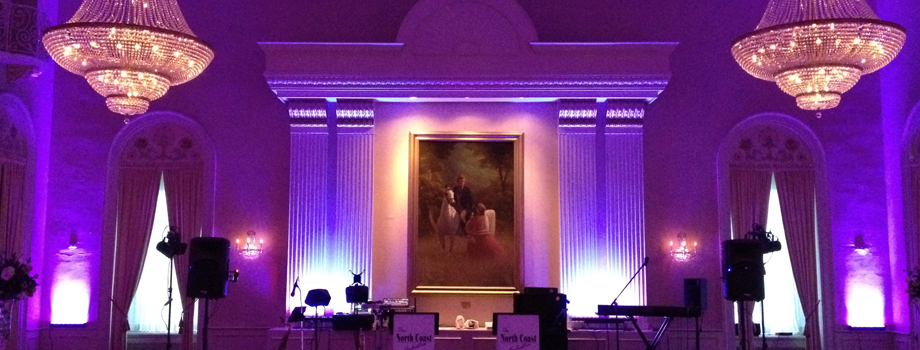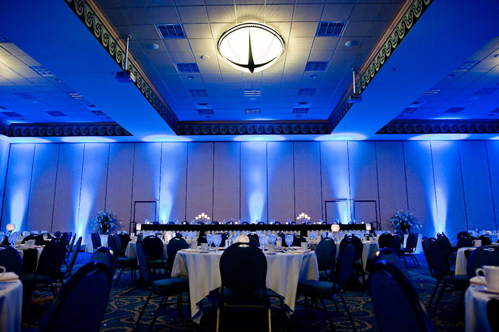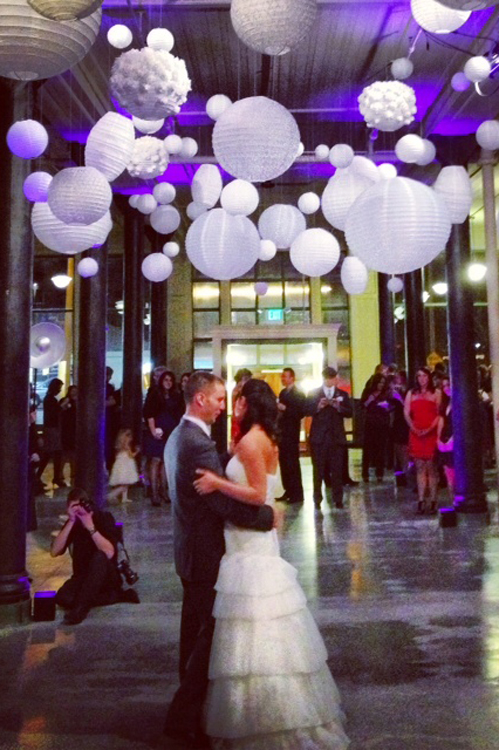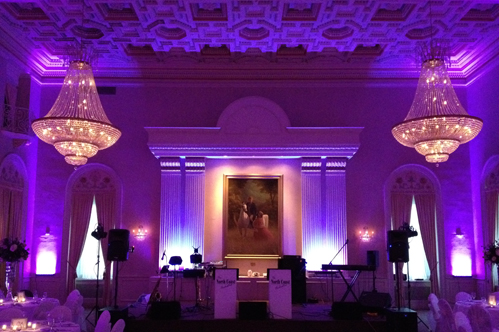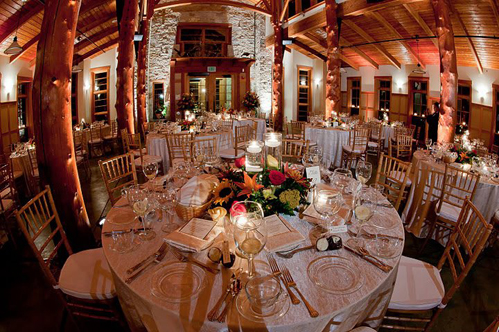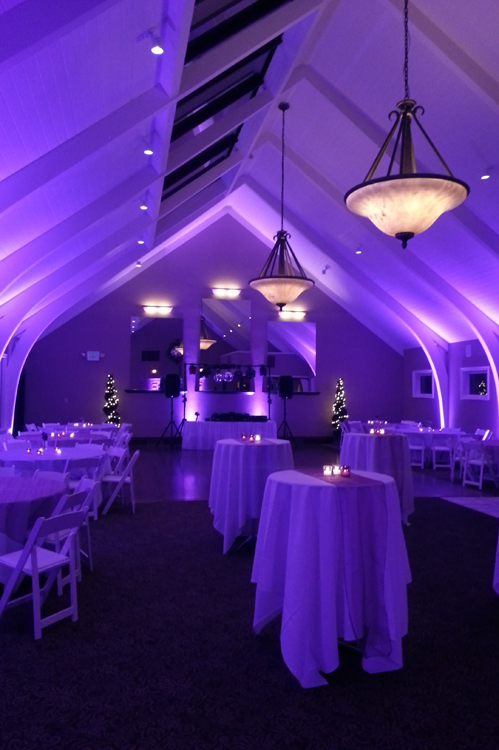There’s no doubt that weddings have evolved radically over the past generation. These days, a lighting company is frequently among a couple’s team of professionals. In fact, this additional event dimension likely isn’t a trend at all, but a wedding element that’s here to stay.
“It’s a proven fact that when you stimulate multiple senses of the human body, you get a more powerful psychological response,” says Chad Torkelson of Midwest Sound in Waukesha, one of the country’s longest-running lighting and DJ companies. “The music excites the brain—then the lights multiply that excitement! Sadly, too many people neglect this little item…leaving the guests with only half the fun.”
The options
“Uplighting is no doubt the single most visually powerful lighting technique available,” asserts the ACA Music & Entertainment website. Matt Anton, a representative for the Brookfield vendor, adds that it’s been a “hot seller” and is sure to hold its popularity into 2013. All the lighting experts I spoke with agree, uplighting—illuminating a surface from bottom to top—tops Milwaukeeans’ wedding wish lists for lighting.
Though incandescent lights with colored gels are still around, many local lighting pros, including Midwest Sound, use only LED lighting. “It’s the safest, most reliable, most energy-efficient, and most versatile technology available,” says Torkelson.Want to light spaces without access to outlets—tents, trees or outdoor architectural details, for example? “We now offer wireless uplighting!” says Anton. “We use high-powered wireless LED lighting fixtures with computerized DMX controllers to match the colors the buyer chooses.” His company is among a number of local outlets that have the capability, which offers a clean look to any space.
Sound By Design in Shorewood is another. “We’re always trying to be ahead of the game,” says David Hackbarth, lighting guru at the 16-year-old family-run company. Their team also illuminates events with downlighting, as well as spotlighting (to highlight focal points), string balls, chandeliers and tree-stand lighting (typically for tents).
“There’s a lot of talk in the industry about battery powered lights and wireless color-changing capability,” warns Torkelson. “These are great ideas in theory, but the technology is still being refined.”
Not all lighting techs, including Anton, agree. Come in and check it out for yourself, he says.
If the technical aspects of lighting leave you reeling, don’t worry. “Most couples approach us for a professional opinion,” Hackbarth says, adding that a member of his team will meet the couple on location to set up sample lighting with pricing options. “We try to paint visions in their heads. That helps them figure out a realistic budget for the lighting of their dreams.”
The type of lighting a couple chooses all boils down to one thing: “No matter what type of project it is, we always have to keep in mind the couple’s style,” says Hackbarth. “The theme of the wedding, the décor and all of that is very important. It ensures success of the entire event, your pictures and the immediate ambience and atmosphere.”
The look
Most of the time, says Torkelson, couples opt for single-color lighting that complements their color scheme. The hot colors of late: purples, blues and greens.
“Some clients will incorporate a dominant color and an accent color, and when it’s done right, it can look wonderful,” Torkelson explains. “Either way, it’s a very powerful tool to make the reception space look as if it were designed and decorated just for the client’s event!”
Hackbarth agrees, saying these days, local couples are turning from vibrant tones to softer hues. “It’s nice, natural and warm instead of circusy. But some people want that look, too,” he adds. “And we can make that look classy, as well.”
Possibilities abound when it comes to color. However, pros say it’s tough to create blacks, browns, deep hues and soft white with LED lights. If soft white is the tone you were hoping for, don’t despair: Next year, Hackbarth says, these bulbs are hitting the market.
The cost
Don’t worry—you won’t have to forego, say, cake just because your heart is set on some visual ambience. Small uplighting jobs, which involve around five fixtures (enough to illuminate a spot like the head table), start at less than $200 in Southeastern Wisconsin, and some companies even offer the occasional deal. To light a whole banquet space, which takes typically 15 to 20 lights, the cost averages to less than $500. Bonus: If you hire a DJ who also does lighting, brightening up the dance floor is often rolled into the fee.
“You’d be surprised at how affordable it can be!” Torkelson says, but adds a few tips to make sure you’re getting your money’s worth: Confirm the pro is using LED lighting (he says incandescent lights with gels get dangerously hot and leech energy), ask how many fixtures are in the quote and the cost of additional ones, and double-check that setup, tear-down and travel are included.
“People who are on a budget just have to keep it classic and simple,” explains Hackbarth. “Any extra budget is good budget for lighting.”
Of course, if you want to go beyond that, have at it. “Because of the sheer cost of the gear, it’s very common to see prices range from $500 to over $1,000 for an uplighting project,” says Torkelson, who tells me pros can pay a staggering $300 for a single cutting-edge fixture.
If you love the look of custom lighting, the industry may be even further along by the time your wedding day arrives. The innovations in lighting are just beginning, Hackbarth assures. “We’ll be evolving into more of the specialty lighting. The best is yet to come.”
Special thanks to John McCarthy of Sound By Design for his assistance on this article.
